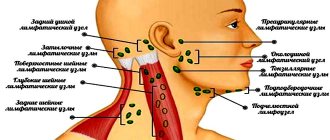Inflammatory eye diseases
develop as a result of a specific reaction of the body to damage or the introduction of a foreign agent, and constitute the main part of all ophthalmological pathology. If left untreated, these diseases can lead to serious complications: clouding of the cornea, decreased vision, and spread of the process to adjacent tissues and organs.
The inflammatory process can occur in any part of the eyeball: cornea, conjunctiva, sclera, iris, choroid. Most often in the practice of an ophthalmologist, pathology of the anterior part of the eye occurs.
Conjunctivitis
The conjunctiva is the outer membrane covering the eyeball and eyelids, which is the first to come into contact with harmful environmental influences. Therefore, conjunctivitis accounts for 60% of all inflammatory diseases.
According to the course, acute and chronic variants of the disease are distinguished. Main symptoms of eye diseases
in the acute stage: redness of the conjunctiva, intense lacrimation, a feeling of “sand in the eyes,” intolerance to bright light, pain and burning. In the chronic form, bilateral inflammation always develops.
Keratitis
This disease occurs when the cornea (the transparent membrane at the front of the eye) is damaged. A distinctive feature of the pathology is a sharp decrease in the size of the palpebral fissure up to complete closure of the eyelids, which occurs due to irritation of nerve receptors. Other signs: increased sensitivity to light, lacrimation, intense pain, foreign body sensation. With a long course of the disease, ulceration of the cornea is observed.
Barley (hordeolum)
The disease is an acute inflammation of the sebaceous gland or hair follicle of the eyelid. The pathology has a characteristic clinical picture: first there is swelling and redness of the eyelid area, which may be accompanied by itching, burning, and a sensation of a foreign body. After a few days, the swelling thickens and a yellow dot appears in its center, which indicates the maturation of the abscess. Then the barley is opened with the release of pus. In severe cases of the disease, an extensive abscess forms with a tendency to spread to surrounding tissues.
Blepharitis
This eye disease is characterized by chronic inflammation of the edges of the eyelids of various etiologies. Local symptoms of the pathology: hyperemia and swelling of the eyelids, pain and burning in the eyeball, decreased clarity of vision. There may also be mucous or purulent discharge, which leads to sticking of the eyelids and the inability to open the eyes. With scaly blepharitis, intense fine-plate peeling of the skin of the eyelid is noted. With ulcerative blepharitis, superficial skin defects are formed, accompanied by inflammation of the hair follicles of the eyelashes.
Uveitis
Depending on the location of the lesion, anterior uveitis (iridocyclitis) and posterior uveitis (chorioretinitis) are distinguished. With iridocyclitis, pain and burning, intense lacrimation, redness, and decreased visual acuity are noted. Chorioretinitis is characterized by scant clinical symptoms. The disease occurs in a chronic form, the first signs are dull pain inside the eyeball, “fog” before the eyes, distortion of the shape of surrounding objects. Without treatment, the disease can result in complete loss of vision.
Symptoms of ovarian inflammation
Symptoms of this disease include:
- aching, nagging pain in the lower abdomen that occurs when the body is overcooled, as well as during menstruation;
- pain during sex.
Later, when the disease develops, the above symptoms are also added such as:
- chills;
- frequent urge to urinate;
- a sharp increase in body temperature to 38-39 ° C;
- intense pain radiating to the lower back;
- copious vaginal discharge that appears clear.
In particularly severe cases, nausea and vomiting may also occur. Chronic inflammation of the appendages contributes to increased pain sensations, as well as their range. Therefore, symptoms of adnexitis (inflammation of the ovaries) may include pain in the lower abdomen, groin, sacrum and vagina.
Chronic inflammation can be accompanied by sexual dysfunction, menstrual disorders, miscarriages and the development of ectopic pregnancy.
Causes of this disease
The infection can enter the body through sexual intercourse (during sexual intercourse from an infected partner). In this case, microorganisms enter the appendages, after which they cause an inflammatory process. This could be chlamydia, gonococci, mycoplasma or trichomonas. Those women who are promiscuous, as well as those who continue sexual activity immediately after childbirth or abortion, are susceptible to such inflammation.
Also, this disease causes the activity of microflora located in the woman’s body or entered into it through non-sexual means (activation of autoinfection). Streptococci, staphylococci, E. coli penetrate the appendages, after which they cause inflammation. As a rule, they cause other types of inflammation, but for some reasons (for example, a general decrease in immunity, the presence of other diseases in the body: dysbacteriosis, sinusitis and even ordinary caries) this microflora can become aggressive.
Causes of development of inflammatory eye diseases
Clinicians identify the main etiological factors of eye diseases
:
- contact of an infectious agent (virus, bacteria, fungi) on the surface of the conjunctiva with dirty hands, when swimming in contaminated bodies of water;
- hematogenous spread of pathogenic microorganisms from foci of chronic infection;
- prolonged exposure to ultraviolet radiation (including “snow blindness”);
- allergic reactions to medications, pollen;
- eye fatigue, constant work at the computer;
- injuries, ingress of foreign objects;
- irritating effects of smoke, atmospheric pollutants, chemical reagents.
Causes of eye disease
Less common causes of eye disease
: long-term wearing of contact lenses, metabolic disorders, vitamin A deficiency, endocrine diseases, atherosclerotic and other vascular lesions of the eyeball.
Why is this disease dangerous?
Inflammatory processes in the appendages can disrupt the integrity of the epithelium of the fallopian tubes, resulting in adhesions that make the fallopian tubes impassable. And this, in turn, leads to infertility.
Factors that can cause inflammation
These include:
- promiscuous sex life, lack of contraception, frequent change of partners;
- stress, poor and irregular nutrition, overwork;
- hypothermia: in no case should you neglect a hat in severe frost; you should not wear nylon stockings and tights in the cold season;
- using a heating pad when pain occurs: this will only provoke further development of inflammation;
- advanced diseases: sore throat, gastritis, untreated caries, dysbacteriosis.
What to do if symptoms appear? It should be remembered that treatment should only be carried out by an obstetrician-gynecologist.
Sexually transmitted infections (STIs)
STIs are a fairly large group of microorganisms that are mostly conditionally dangerous. In relatively small quantities, they create a certain “ecology” in the vagina, being part of its microflora. This flora also includes microorganisms that act as orderlies. They prevent the reproduction of the above-mentioned opportunistic flora. But in case of decreased immunity, the balance is disturbed and vaginal dysbiosis subsequently develops.
A decrease in immunity occurs in the following cases: during exacerbations of chronic diseases; for acute infectious diseases (for example, influenza, ARVI); after emotional stress or against the background of chronic stress that develops over a long period of time. In addition, a decrease in immunity can occur against the background of a sharp climate change or pregnancy.
All sexually transmitted diseases are characterized by their own distinctive features, but all of them are characterized by a chronic course, as well as minor symptoms. In most cases, women do not notice the disease, and only against the background of a common cold do they notice discomfort in the genital area, increased vaginal discharge, vague periodic nagging pain in the lower abdomen and itching.
Chlamydia
What are chlamydia? These are microorganisms that parasitize the epithelial cells of the patient, destroying them.
Infection occurs during sexual contact, not necessarily genital, but also oral or anal. The incubation period averages 7 – 14 days.
There are no problems with the treatment of chlamydia. Correct selection of an antibacterial drug, its dosage, correctly calculated duration of treatment, as well as the patient’s strict compliance with all doctor’s prescriptions (which is very important) will lead to successful treatment. In most European countries, the USA and Russia, the cost of treatment for chlamydia and other hidden infections is much lower than the cost of diagnosis.
Hidden infections are chlamydia, mycoplasma, ureaplasma and trichomonas. They are always subject to mandatory treatment, and for both partners, even if only one of them gets sick.
Causes of inflammation of the sciatic nerve
Experts identify a number of reasons for the appearance of the inflammatory process:
- Infectious diseases
- Hypothermia
- Endocrine pathologies
- Failure of the body's hormonal levels
- Pregnancy
- Birth injuries
- Neoplasms (malignant and benign) in the spine
- Injuries to the spine - sacral calf, for example, due to a severe bruise or fall from a height, excessive physical exertion
- Hernia in the lumbar region
- Growths on the spinal column
- Sudden, sloppy movements
- Stenosis
- Thrombosis
- Extreme stages of osteochondrosis
Complications
In men, chlamydia causes inflammation of the epididymis (epididymitis), and in women it causes cervical disease, inflammation of the epididymis, and tubal infertility. During pregnancy, chlamydia can cause serious pathology of the fetus. It also leads to Reiter's disease (severe damage to the eyes and joints).
Monitoring the results of treatment for chlamydia, as well as other hidden STIs, should be carried out no earlier than 3 weeks after stopping medication. Symptoms may persist for several weeks or even months after successful treatment. As for resuming sexual activity, this is possible only after a follow-up examination of two partners.
Ureaplasmosis
Ureaplasmas are very small microorganisms that do not have and do not need their own cell membrane. This feature allows them to penetrate the cells of the host body, so very often they are not visible to the protective cells of the immune system. Consequently, ureaplasma can exist in the human body for more than 10 years. Note that ureaplasmosis is more common among women than among men.
Ureaplasmas received this name because of their ability to break down urea - ureolysis. That is why ureaplasmosis is a urinary infection; without urea, ureaplasma cannot survive. Very often, ureaplasmosis is associated with diseases of the urinary system, chronic cystitis, urethritis and pyelonephritis.
Ureaplasma is usually transmitted sexually, but it is also possible for a child to become infected during childbirth. The incubation period is approximately 1 month. The further development of the disease depends on the body’s immunity, the presence or absence of other vaginal diseases, etc.
In most cases there are no symptoms. Sometimes patients may complain of more abundant discharge than usual, a burning sensation when urinating, discomfort in the genital area and intermittent nagging pain in the lower back and lower abdomen.
Ureaplasma and pregnancy
Ureaplasma can lead to a destructive process in the appendages and uterus, thereby contributing to the development of complications that can lead to pathologies during pregnancy. That is why during this period it is imperative to get tested for this infection, and if it is confirmed, then undergo treatment.
Ureaplasma does not cause malformations in the fetus. In most cases, infection of the baby occurs during childbirth during the passage of the fetus through the infected birth canal. In addition, ureaplasmosis can cause miscarriage, premature birth, threatened miscarriage and endometritis (one of the postpartum complications).
Treatment during pregnancy is most often carried out at 18-20 weeks.
Treatment of ureaplasmosis
Treatment of this disease must be comprehensive and long-term. First of all, antibacterial drugs are prescribed, but taking antibiotics alone is not enough, since ureaplasma can easily adapt to the effects of antibiotics during treatment. Also used in treatment are drugs that increase general and local immunity; antifungal drugs, since antibiotics can cause thrush. The drug complex also includes drugs that can protect the intestines from the effects of antibiotics.
As for the need to treat a partner if he does not have an infection, this is a controversial opinion. This issue must be resolved by the attending physician and the partners themselves.
During pregnancy, the choice of drugs is limited. Only those drugs that are approved during this period can be used. Antibiotics include Vilprafen, Rovamycin, and Erythromycin.
Gardnerellosis
The disease is not an STD. It is caused by gardnerella vaginalis, and, in fact, gardnerella is a manifestation of vaginal dysbiosis. That is, this is not inflammation in the vagina. That is why this disease is also called bacterial vaginosis.
Unlike other infections, with gardnerellosis the symptoms are pronounced and specific. Symptoms include heavy, thin vaginal discharge that is white or yellowish in color and has a very unpleasant odor, similar to rotten fish. This odor may become stronger during and after menstruation, as well as after sexual intercourse. This disease causes discomfort and burning in the external genital area.
During a gynecological examination, an experienced doctor will be able to immediately make a diagnosis, since the discharge has a slightly foamy characteristic appearance. In some cases, there may be no symptoms, so gardnerella can only be detected during an examination.
Gardnerella is located directly in the vagina. This infection most often does not penetrate further, therefore there are no symptoms such as, for example, pain in the lower abdomen.
Gardnerella and pregnancy
Gardnerella can cause a lot of trouble during pregnancy. It is possible, although very rare, that intrauterine infection may occur. Gardnerella can also cause inflammation of the uterus after childbirth or abortion. That is why bacterial vaginosis during pregnancy must be treated immediately when it is detected.
Gardnerella usually appears in a simple smear on the flora. The PCR diagnostic method is also used to identify them.
Treatment
Treatment is carried out in 2 stages. First, the infection is destroyed, and then the microflora in the vagina is restored.
At the 1st stage, drugs such as flagyl, fasigin, clindamycin, trichopolum are used.
The 2nd stage is longer, it can last 1 month or even more. Here you need to be patient, because... If the microflora is not restored, the disease will return again. Sexual activity during the treatment period is possible, but only if the partners use a condom.
In men, gardnerella “takes root” and does not develop, so treatment of sexual partners is not required.
What to do if a tooth becomes inflamed?
It is clear that it is better to consult a dentist. What if the doctor is far away, you are at the dacha, it’s night and there is no one to leave the children with? You can try to relieve the pain yourself, using what you have at hand. The World Wide Web is full of tips on how to relieve tooth inflammation at home.
Folk remedies recommend:
- Gargling with herbal decoctions. Sage, chamomile, calendula are suitable. It is important that the broth is not too hot or cold. The optimal temperature is 50-60 degrees.
- Applications from clove oil, eucalyptus, propolis tincture. Be careful with tinctures, alcohol can burn the mucous membranes.
- Solutions of salt and soda help wash away food debris and relieve irritation. A drop of iodine in the solution will perform a disinfecting function.
If there are no herbs and it is unclear what to rinse with, there is a modern life hack. Mouthwashes contain antimicrobial agents and herbal extracts. They will cope no worse than infusions and decoctions.
Important! A sick tooth should not be heated. Avoid heating pads, bags of hot sand, and salt.
But a cold compress can relieve swelling and reduce discomfort.
If you have painkillers in your medicine cabinet, don’t delay taking them. The pain is exhausting and makes it difficult to concentrate. It’s better to relieve the pain and think about the next steps.
Remember, taking a pill does not fix the problem. Knowing how to relieve pain is useful, but only a qualified dentist can find the cause and eliminate it.
Human papillomavirus
Recently, this infection has received the attention of most researchers, as well as practitioners. This is due to the fact that the ability of this infection to cause cancer of the genital organs in both women and men has been proven.
Human papillomavirus infection, like many other STDs, very often occurs without symptoms, thereby contributing to its even greater spread in the human body. Not all cases of HPV cause cancer, but almost every case of cancer is caused by HPV.
Currently, more than 120 types of HPV have been identified, 34 of which affect the genitals, as well as the perineal area. Moreover, each virus is responsible only for its own “area”.
How does a person become infected with this virus?
HPV can be transmitted during direct contact of mucous membranes and skin when:
- traditional sexual intercourse (the main route of transmission of infection);
- non-traditional sexual intercourse (anal or homosexual sex). It is also believed that HPV transmission is possible through oral-genital contact;
- during childbirth during the passage of the fetus through the infected genital tract of the mother;
- The household route of transmission is also possible: through hands, bath accessories, dirty clothes.
Factors that provoke the development of HPV
These factors include:
- promiscuity, early sexual activity, a large number of partners;
- repeated abortions;
- the presence of other STDs (chlamydia, ureaplasma, mycoplasma);
- smoking;
- chronic diseases of the genital organs (inflammation of the uterus, appendages, vagina);
- anal sex;
- aggravated medical history (cervical cancer in close relatives).
The incubation period ranges from 1 to 8 months. People aged 17-26 years are most often susceptible to HPV infection, which is associated with increased sexual activity at this age. But this does not mean that older people cannot be infected.
Sometimes there are cases that the virus leaves the body on its own, without treatment. This happens most often in young people over 30 years old. If the virus enters the body after 35 years, then the likelihood that it will leave the body on its own is, unfortunately, small.
Forms of infection
This infection can occur in 3 forms:
- Latent form. It is asymptomatic. In this case, there are no changes or abnormalities, but the infected partner can transmit the infection through sexual contact.
- Subclinical form. Patients may have the following symptoms: vaginal discharge, a feeling of discomfort and dryness in the external genital area, which intensifies after sexual intercourse, itching, burning. At the same time, an ordinary gynecological examination will not reveal changes in the genital area. They can only be detected through a detailed examination (for example, colposcopy).
- Clinical form. Finally, the most common symptom of HPV is condylomas. This is a type of wart that is located on the mucous membrane of the genital organs, namely: at the entrance to the vagina, in the area of the clitoris, anus, urethra, and on the walls of the vagina. Occasionally they can be found on the skin of the perineum and labia.
Condylomas are skin growths that resemble a cockscomb in appearance. They can be on a stem or on a base. The color of condylomas is no different from the color of the surrounding tissues.
HPV is detected using the PCR diagnostic method.
Treatment
Condylomas are removed chemically (using various medications), using a laser, and also by cryodestruction. Then treatment is carried out aimed at increasing the body's immunity. In this case, vaginal and rectal suppositories are prescribed for local immunity and various drugs that stimulate general immunity - tablets or intramuscular injection.
It is also necessary to screen your partner for this disease. Sexual intercourse during treatment is possible only with the use of a condom.











